New from Qualcomm: ARM Netbooks, Open Source Initiatives and New Technology
Qualcomm invited everyone to their Innovation Event 2009 in London on November 22, where they presented the newest out of their research labs and gave a glimpse of where their journey was taking them. Of interest to us were the ARM netbooks and Qualcomm's newest open source team.
With a vendor rooted in the tradition of mobile chipsets, it was natural that much of the presented technology was directly related, such as the upcoming Evolved High-Speed Packet Access (HSPA+) wireless broadband standard that provides data rates up to 28 Mbits/s, or the 3G successor LTE. With Femtocell, Qualcomm wants to put mini cell towers in highly frequented buildings to get the maximum HSPA data rates and obtain better coverage. The Gobi chipset should make it attractive for OEMs to integrate 3G directly into notebooks, which not only makes ugly USB dongles and Express/PCMCIA cards obsolete, but provides some reception benefits, because antennas are integrated into the home and optimized for best reception.
Mobile Software Initiatives
Qualcomm's software side includes Plaza, an app store solution that makes it easy for mobile app developers and providers to set up an app store and deliver their wares without having to worry about incompatibilities among hundreds of mobile phone models. Plaza developers also don't need to be concerned about legal ramifications in different countries. Qualcomm has been BREW-ing a developer environment for mobile phones quite a bit longer than Apple, Google and company and it has already delivered over two billion programs. Via Skifta, Qualcomm wants to make media content and UPnP/DLNA available from device to device.
Power Saving Displays and Cordless Recharging
Particularly interesting are some fundamental technologies that Qualcomm developed for mobile devices. Mirasol, for example, is a new passive display technology. It could be described as the video- and color-capable version of the E Ink display technology, which is currently the de-facto standard for eBook-readers. Like E Ink, Mirasol works without its own light source and uses power only when changing display content. But unlike E-Ink, it doesn't require a "reset" of the pixels when changing them, so it can display video as well.Qualcomm presented a demo of this on a small 2.2" display in QVGA resolution that played videos at 30 frames/second. There would be occasional screen tearing, but Qualcomm was quick to qualify it as a prototype problem that they would soon fix.
The resolution at 221 dpi is higher than the 160 dpi of E Ink displays and the color rendering was brilliant and totally independent of viewing angle. According to Qualcomm, the displays are not only exceptional in bright sunshine, but are also lightable from above (frontlight), which is more efficient in power usage than LCDs that emit only 6% of the generated light on average. Because power usage with Mirasol depends on how often things change in the display, the power savings vary: for ever changing video frames Qualcomm promises a reduction in the display portion of the power consumption from 29% to 4%, compared to an LCD. When writing SMS, the CPU doesn't require much power, the LCD requiring 73% and Mirasol only 10% of total power, both including lighting, LCD backlighting and Mirasol frontlighting.
Of equal interest was eZone, a technique for cordless recharging of mobile devices. Placing the device on an eZone-enabled platform automatically recharges it for no longer than it would take plugged in. Multiple devices can be recharged on the same platform (assuming they are placed about an inch apart). Increasing the number of devices increases the recharging time, but users can give certain devices recharge priority. Amazing is that eZone doesn't work by induction, so there is no danger to magnetic data storage or credit cards. Qualcomm didn't want to reveal technical details, but did hint that it relied on lower frequency RF waves. The first eZone devices should start hitting the market in 2010.
Open Source and Qualcomm
Our main interest, nevertheless, were the ARM netbooks with Qualcomm's newest CPU. With Snapdragon, Qualcomm claims to have established a new class of ARM-based netbooks. ARM netbooks provide a great opportunity for Linux, because Microsoft's Windows software and drivers can't handle ARM, while Linux is highly portable and works on ARM as well as on x86. Just weeks ago Qualcomm announced the formation of its Innovation Center (QuIC). We spoke with Sy Choudhury, Qualcomm's director of project management, about it. He told us that open source was a priority for Qualcomm, a fact that was also often stated in the Innovation Event 2009 keynotes. QuIC is to be independent of other development efforts at Qualcomm so that no patent issues arise. The team has already begun its work: ARM patches were already submitted for the Linux kernel, the Gstreamer framework, the v412 video framework and Google's V8 JavaScript engine (highly optimized only for x86), and ARM optimization for ffmpeg is in the planning stages. The stated goal for QuIC is to give back as much as possible to the developer community and increase the popularity of the ARM platform in general. Using open source for their own development (such as Apple is apt to do) is second priority for Qualcomm. The Code Aurora Forum aims to become the central gathering space for open source development in the mobile world, with QuIC just being one of many contributors.
Qualcomm's own Snapdragon isn't the only CPU to benefit from the Code Aurora Forum, but also other ARM CPUs based on the V7 instruction set, such as ARM chips from Marvell, Texas Instruments and even Apple, whose iPhone also contains a Cortex A8. We wanted to know from Choudhury when Qualcomm planned to move to the new Cortex A9 design that ARM presented a few weeks ago. As a first for ARM CPUs, it promises out-of-order excecution, improved
floating-point performance, multicore up to quadcore and over 2 GHz clockrate. Choudhury didn't want to commit, but stressed that the collaboration and idea exchange with ARM was tight -- Qualcomm doesn't license complete ARM cores like other vendors, but has, thanks to its architectural license, complete freedom in implementing and improving the so-called Hard Macros of ARM's. One could surmise that Qualcomm might deliver the new 45-Nanometer QSD8672 generation of Snapdragons with dual cores and up to 1.5 GHz rate in 2010 and that the successor generation might be Cortex A9-based.
Snapdragon hardware, apart from numerous mobile phones and a larger Windows Mobile MID, also included two netbook prototypes, both running Google's Android. The devices were both quite flat and battery life beyond 10 hours, according to Qualcomm.
Comments
comments powered by DisqusSubscribe to our Linux Newsletters
Find Linux and Open Source Jobs
Subscribe to our ADMIN Newsletters
Support Our Work
Linux Magazine content is made possible with support from readers like you. Please consider contributing when you’ve found an article to be beneficial.

News
-
Two New Distros Adopt Enlightenment
MX Moksha and AV Linux 25 join ranks with Bodhi Linux and embrace the Enlightenment desktop.
-
Solus Linux 4.8 Removes Python 2
Solus Linux 4.8 has been released with the latest Linux kernel, updated desktops, and a key removal.
-
Zorin OS 18 Hits over a Million Downloads
If you doubt Linux isn't gaining popularity, you only have to look at Zorin OS's download numbers.
-
TUXEDO Computers Scraps Snapdragon X1E-Based Laptop
Due to issues with a Snapdragon CPU, TUXEDO Computers has cancelled its plans to release a laptop based on this elite hardware.
-
Debian Unleashes Debian Libre Live
Debian Libre Live keeps your machine free of proprietary software.
-
Valve Announces Pending Release of Steam Machine
Shout it to the heavens: Steam Machine, powered by Linux, is set to arrive in 2026.
-
Happy Birthday, ADMIN Magazine!
ADMIN is celebrating its 15th anniversary with issue #90.
-
Another Linux Malware Discovered
Russian hackers use Hyper-V to hide malware within Linux virtual machines.
-
TUXEDO Computers Announces a New InfinityBook
TUXEDO Computers is at it again with a new InfinityBook that will meet your professional and gaming needs.
-
SUSE Dives into the Agentic AI Pool
SUSE becomes the first open source company to adopt agentic AI with SUSE Enterprise Linux 16.

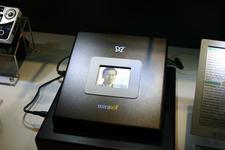
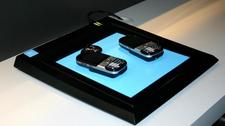
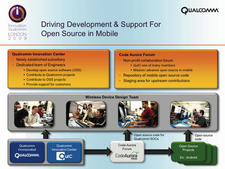
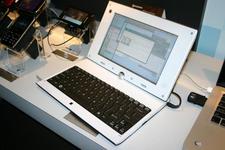
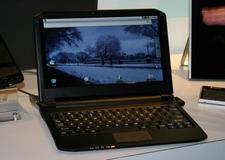
Corrected
HTC Netbook